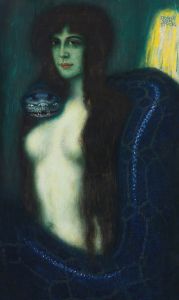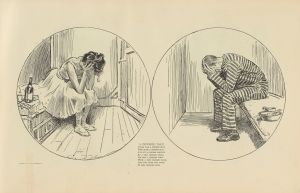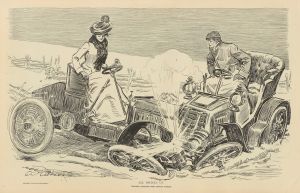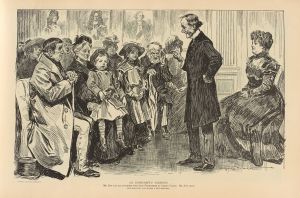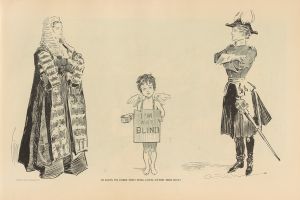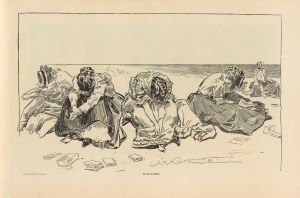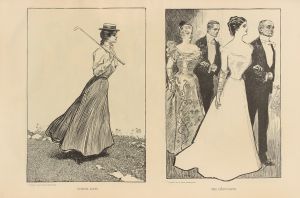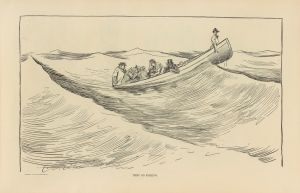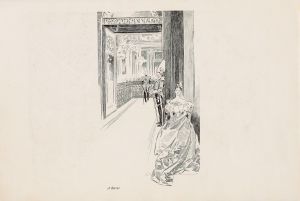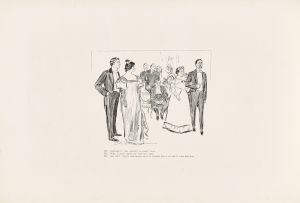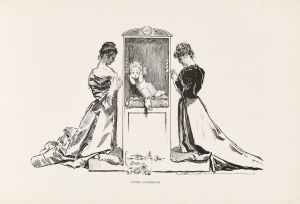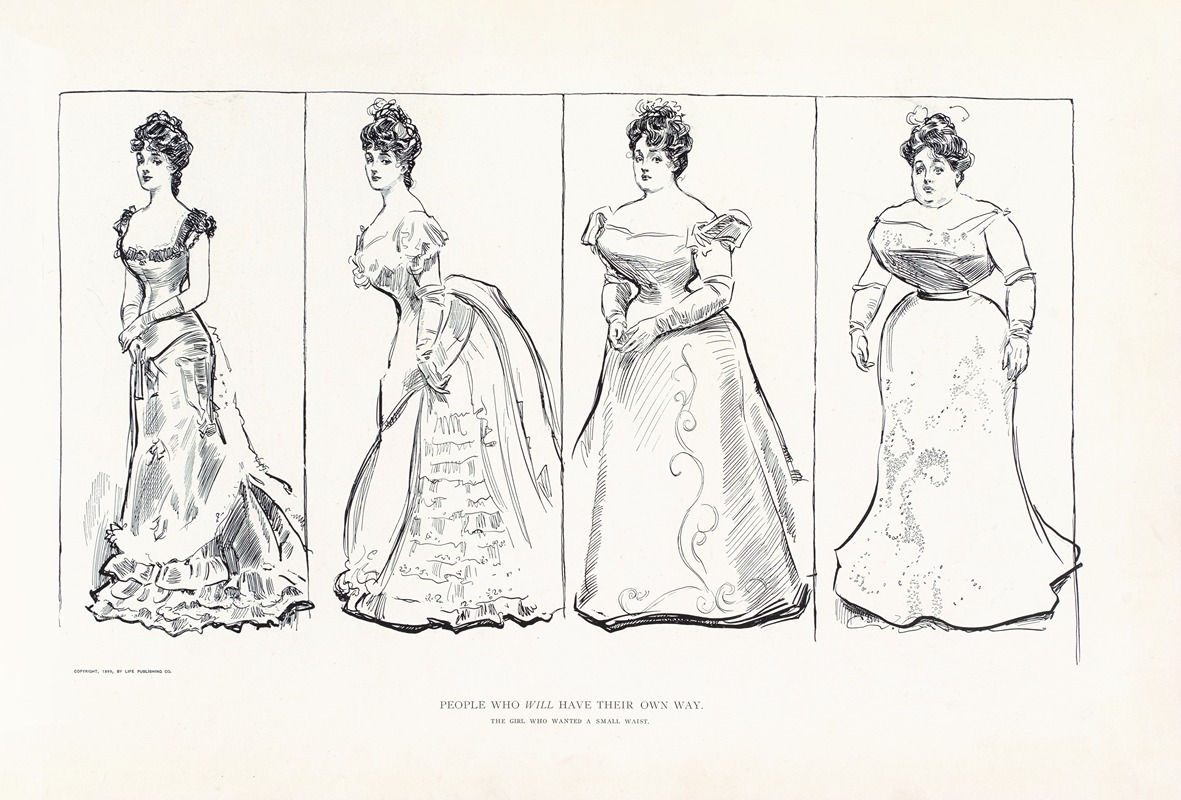
People who will have their own way – The girl who wanted a small waist
A hand-painted replica of Charles Dana Gibson’s masterpiece People who will have their own way – The girl who wanted a small waist, meticulously crafted by professional artists to capture the true essence of the original. Each piece is created with museum-quality canvas and rare mineral pigments, carefully painted by experienced artists with delicate brushstrokes and rich, layered colors to perfectly recreate the texture of the original artwork. Unlike machine-printed reproductions, this hand-painted version brings the painting to life, infused with the artist’s emotions and skill in every stroke. Whether for personal collection or home decoration, it instantly elevates the artistic atmosphere of any space.
"People who will have their own way – The girl who wanted a small waist" is an illustration by Charles Dana Gibson, an influential American graphic artist best known for his creation of the "Gibson Girl," an iconic representation of the American woman at the turn of the 20th century. This particular work is part of Gibson's extensive collection of illustrations that capture the social mores and cultural attitudes of his time.
Charles Dana Gibson was born on September 14, 1867, in Roxbury, Massachusetts. He studied at the Art Students League in New York City and began his career as an illustrator in the late 19th century. Gibson's work was widely published in popular magazines such as Life, Harper's Weekly, and Scribner's, where his illustrations gained significant popularity. The "Gibson Girl" became a cultural phenomenon, symbolizing the idealized image of youthful, independent, and fashionable women during the Progressive Era.
The illustration "People who will have their own way – The girl who wanted a small waist" reflects the societal fascination with the hourglass figure, which was a beauty standard of the time. The late 19th and early 20th centuries saw the widespread use of corsets, which were designed to cinch the waist and create an exaggerated silhouette. This fashion trend was often criticized for its impact on women's health, as tightly laced corsets could cause discomfort and even physical harm.
Gibson's work often contained subtle social commentary, and this illustration is no exception. By depicting a young woman determined to achieve a small waist, Gibson highlights the lengths to which individuals would go to conform to societal expectations of beauty. The illustration may also suggest a critique of the rigid gender norms and the pressures placed on women to adhere to specific physical ideals.
The "Gibson Girl" itself was a complex symbol. While she represented independence and confidence, she was also a product of her time, embodying both the progressive and conservative elements of early 20th-century American society. The "Gibson Girl" was often portrayed as a woman of privilege, engaging in leisure activities and displaying a sense of self-assuredness that was both admired and aspirational.
Gibson's illustrations, including "People who will have their own way – The girl who wanted a small waist," played a significant role in shaping public perceptions of femininity and fashion. His work remains a valuable historical record of the cultural and social dynamics of his era. The popularity of the "Gibson Girl" waned with the advent of World War I and the subsequent changes in fashion and societal attitudes, but Gibson's influence on American art and culture endures.
Charles Dana Gibson continued to work as an illustrator and artist until his death on December 23, 1944. His legacy is preserved through his contributions to the field of illustration and his keen observations of the world around him, captured in his timeless and evocative artwork.





